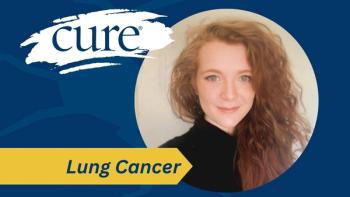
- Spring 2015
- Volume 14
- Issue 2
Watch Your Mouth
Patients with cancer who have taken bone-strengthening drugs should be on the lookout for osteonecrosis of the jaw.
Lauren Levi, DMD
Bone-strengthening drugs are often prescribed to patients with multiple myeloma or breast or prostate cancer that has metastasized to the bone, and sometimes also to those with bone cancers. The term is a broad colloquial one used to describe anti-resorptive medications such as bisphosphonates, including Zometa (zoledronic acid) and Aredia (pamidronate), designed to slow or prevent bone loss and reduce the level of calcium in the blood. The term can also refer to Xgeva (denosumab), a drug that works in a different way to protect bones from degrading.
As anti-resorptive drugs, these treatments may alter the functioning of bone cells. Thus, they may be associated with a condition of abnormal wound healing known as osteonecrosis of the jaw, or ONJ. While this condition has also been associated with some other drugs used in cancer treatment, such as Avastin (bevacizumab) and Sutent (sunitinib), the incidence of ONJ tends to be higher in those who have used bisphosphonates or Xgeva.
Characteristics
Signs and Symptoms
Risk Factors
It is not fully understood how ONJ arises. In patients who have taken a variety of drugs associated with ONJ, it is difficult to pinpoint which of the drugs are responsible.The American Society of Bone and Mineral Research defines ONJ as an area of exposed or dead bone in the head and neck region that persists for greater than eight weeks in a patient with no history of radiation to the jaws. In other words, ONJ usually shows up as an area of exposed bone that fails to heal.Aside from presenting as exposed or dead bone, ONJ may present as a non-healing wound or ulcer, or a draining abscess, usually inside the mouth. Other signs and symptoms can include swelling, a foul odor and numbness or tingling in the mouth. ONJ may or may not be accompanied by pain. In severe cases, it may progress to fracturing of the jaw.While ONJ most commonly results from manipulation of the bone through trauma such as dental extractions, periodontal surgery or implant surgery, it also may occur spontaneously. The risk of ONJ increases with the number of doses of an anti-resorptive medication and the frequency at which the medication is administered. Therefore, it is essential for patients to inform their dentists if they have a history of taking bonestrengthening drugs.
Patients with a history of taking intravenous bisphosphonates have a much higher likelihood of developing ONJ than do patients who have taken oral bisphosphonates. It is important to note that, because bisphosphonates have a long half-life (approximately 10 years), even after the use of these medications has been stopped, they remain in the body for an extended period of time. After 10 years, only half the drug has been eliminated from the body.
Incidence
Prevention
With a shorter half-life than bisphosphonates, Xgeva does not remain in the body for as long as bisphosphonates do, but it does linger for an extended period of time.The actual incidence of ONJ is unknown, but the estimated cumulative incidence ranges from 0.7 percent to 6.7 percent in patients who have a history of taking intravenous bisphosphonates. While the incidence of Xgeva-related ONJ remains unclear, it appears to be similar to that of bisphosphonate-related ONJ.Maintaining good oral hygiene and visiting the dentist regularly are both essential. While dental check-ups are recommended at least two times a year, four times a year is preferable. Regular dental visits may minimize a patient’s risk of developing decay (cavities), which can lead to infection and the need for a dental extraction. Thus, visiting a dentist regularly may help reduce one’s risk of developing ONJ.
Patients should visit the dentist prior to being administered intravenous bisphosphonates, Xgeva or other drugs associated with ONJ. All questionable teeth should be extracted or restored at least 14 to 21 days before a patient starts treatment with drugs associated with ONJ.
Treatment
Extractions after a patient has received drugs believed to be associated with ONJ should be avoided.ONJ is mainly treated through wound care. This means keeping the area extremely clean with either antimicrobial rinses or saline. Those who think they are at risk of developing ONJ, or who are experiencing the condition, should visit their oncologists and their dentists.
Lauren Levi, DMD, is a general dentist with advanced training in dental oncology. For more information, visit her website at laurenlevidmd.com.
Articles in this issue
over 10 years ago
A Singular Sensationover 10 years ago
Meeting Your Matchover 10 years ago
Comments From Readersover 10 years ago
The Skinny on Soyover 10 years ago
Dressing for Successover 10 years ago
One Activist's Legacyover 10 years ago
Working Wonders: Changing Careers After Cancerover 10 years ago
Caregiver Challenge: Sharing Their Painover 10 years ago
Message From the Editorover 10 years ago
First Line



